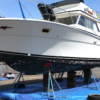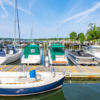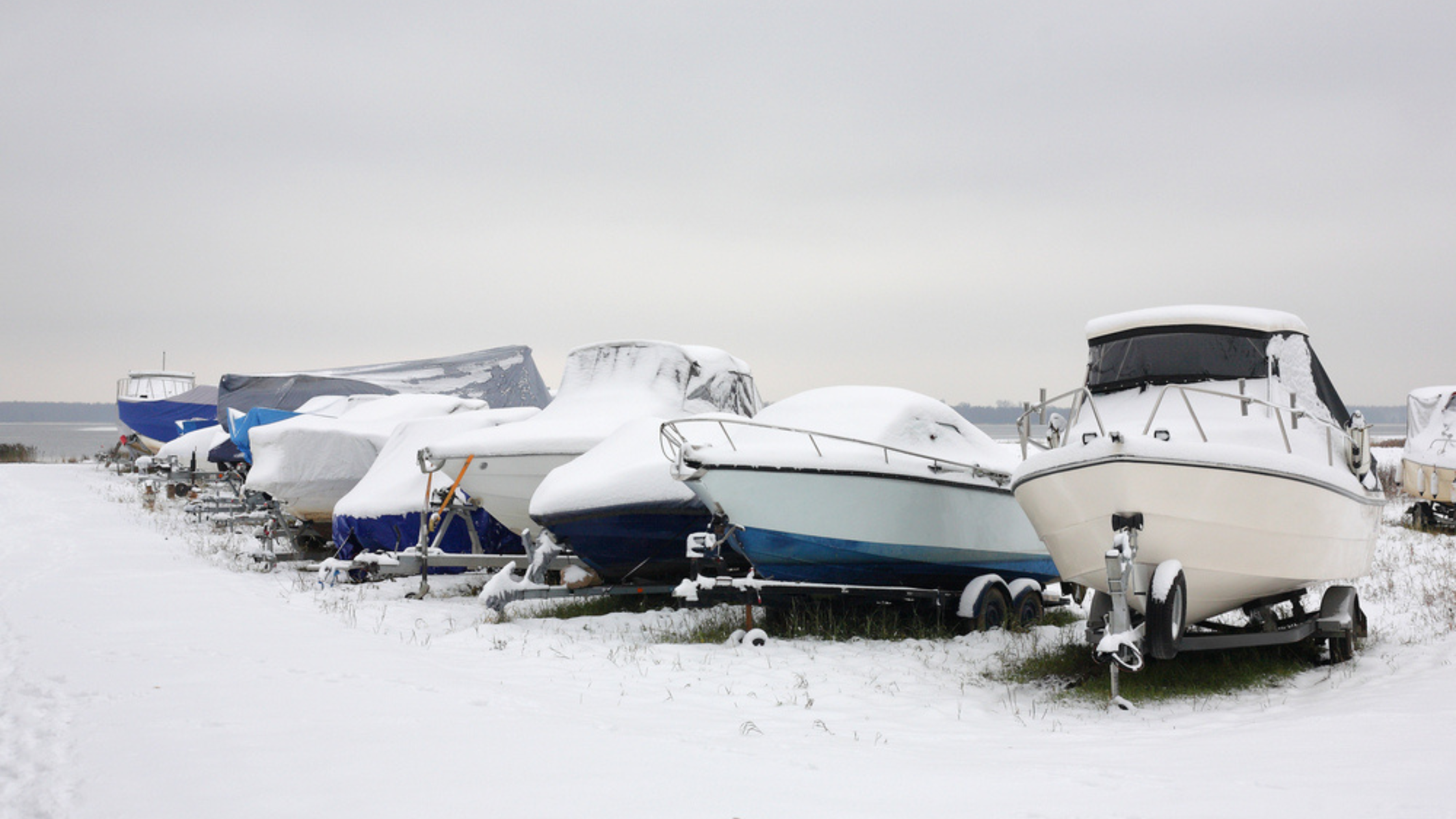
If you want all your boat systems ready to go next spring, put in the work this fall. Your skis can sit in the closet all summer and be fine, but boats don’t forgive neglect. A little TLC will go a long way to protecting your investment as well as your next boating season. Winterizing is a process so let’s take it one step at a time.
Cleaning
Detailing in the fall will protect your boat and allow less mess to stick to surfaces through the winter. Wash the hull, polish and wax the gelcoat, touch up the varnish, remove rust from the stainless, and clean the vinyl. Make a weekend of it or pay a service to do it – about $40 per linear foot depending on the type of boat.
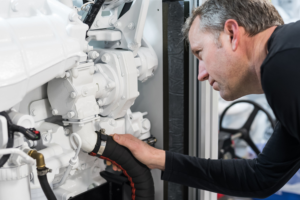
Engine Room Inspection | Credit Lucia.Pinto on Shutterstock
Engine Room
Flush inboard engines and add fuel stabilizer. Fill your tanks to about 7/8 full to keep diesel from growing funky slime but still leaving room for expansion when it gets hot. Drain the outboards. Gasoline breaks down quickly, sometimes in a matter of weeks. The lighter elements flash off leaving sludgy varnish to clog jets and injectors so drain gas tanks completely if that’s feasible.
Antifreeze should be mixed with water to achieve a coolant ratio of 35 to 65 percent. Exceeding recommended concentrations can cause the silicate corrosion inhibiting additives found in most ‘aluminum-safe’ antifreezes to drop out of suspension, forming a greenish gel or goo that clogs the radiator and reduces heat transfer.
Don’t forget the generator which is basically another engine. Inspect the transmission and raw water strainers too.
Systems
Fresh water systems are often overlooked when laying up a boat. Pumps, water lines and strainers can freeze and burst. Run antifreeze through the fridge, ice maker and air conditioning pumps. Drain the water heater and/or run non-toxic antifreeze through the whole freshwater system. Pickle the water maker.
Inspect the shaft and shaft seal/packing gland, exhaust manifolds, and electrical system. Check the batteries, even if they’re the sealed kind like AGMs. Disconnect and remove the batteries and put them on a trickle charger at home if you’re working with a trailerable boat.
Don’t forget the heads. Pump out the holding tank, flush the heads with fresh water to prevent seawater funk, and add antifreeze, pumping it through the hoses, holding tank, and y-valve.
Interiors and Cockpits
A closed boat creates a microclimate so it’s best to stabilize the interior temperature and humidity level. Moisture, darkness and little air flow invite mold and mildew to grow on everything including underneath floorboards and the backs of drawers. It’s unhealthy to breathe and it makes the boat smell. When in doubt, air it out.
Electric dehumidifiers are a good start but make sure you have a safe and reliable source of power to keep them running. Keeping the humidity around 65% can be challenging during rainy winters. Wipe down all surfaces with a mildew spray and use chemical moisture absorbers inside lockers.
Protect the Tasty Parts
If critters get into the boat, they’ll destroy just about everything – upholstery, wiring harnesses, engine hoses, PFDs, and basically anything rubber. Animals can get into a boat in a variety of ways including crawling into the exhaust, chewing through coupling hoses, tearing holes in covers, and running up dock lines. Plug any hole you can and set traps if necessary. Rats, racoons, roaches, and even wasps are very creative.
Electronics
Navigation and communication electronics are delicate – and expensive. Clean them with a microfiber cloth and cover them. If they’re on brackets, consider taking them off the boat and storing them inside a climate-controlled area to reduce moisture buildup.
If you’re leaving your electronics onboard, disconnect the batteries is possible. Also, put a paper bag of rice or silica bead packets behind the helm to absorb moisture near the wiring harness. If the electronics will remain connected, turn them on for a few minutes every few weeks to reduce internal moisture. Finally, back up your data so you don’t lose waypoints and favorite fishing locations.
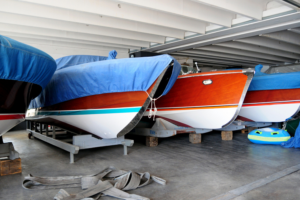
Boats stored inside garage | Credit Arek Rejs on Shutterstock
Trailers and Trailered Boats
The ideal way to store a trailerable boat is in a covered, climate-controlled area such as a warehouse or garage. But that’s not always possible so some people store their boat outside on the trailer outside after they toss on a tarp and hope for the best. There are three problems with that. First, the trailer wheels take a static load for an extended period of time and it’s best to support the boat in some other way. Second, rain and snow will always manage to seep around just about any cover. And third, covers can sag and trap water leading to mold. Try building a PVC framework to support the cover above the boat’s surfaces if you must store it outside.
At the very least, remove all drain plugs and store the boat at an angle with the stern low so water can run out. Pressure wash the hull, scrub growth off props and shafts, and clean all thru-hulls.
A tough but important job
Boat winterization is part common sense, part specific knowledge and lots of elbow grease. If you’re not a DIYer, you can outsource winterizing to a service company which will price the project (by the hour) according to the size and complexity of the boat and the number and kind of engines. If done right, good winterizing will make spring commissioning a breeze.




